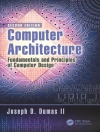Make your websites more dynamic by adding a feedback form, creating a private area where members can upload images that are automatically resized, or perhaps storing all your content in a database. David Powers has updated his definitive book to incorporate the latest techniques and changes to PHP, including the arrival of PHP 7. New features include the spaceship and null coalesce operators, generators, using array shorthand syntax for list(), array dereferencing, and array unpacking with the splat operator.
The problem is, you’re not a programmer and the thought of writing code sends a chill up your spine. Or maybe you’ve dabbled a bit in PHP and My SQL, but you can’t get past baby steps. If this describes you, then you’ve just found the right book. PHP and the My SQL database are deservedly the most popular combination for creating dynamic websites. They’re free, easy to use, and provided by many web hosting companies in their standard packages. This book also covers Maria DB, a seamless replacement for My SQL that has been adopted on many web servers.
Unfortunately, most PHP books either expect you to be an expert already or force you to go through endless exercises of little practical value. In contrast, this book gives you real value right away through a series of practical examples that you can incorporate directly into your sites, optimizing performance and adding functionality such as file uploading, email feedback forms, image galleries, content management systems, and much more. Each solution is created with not only functionality in mind, but also visual design.
But this book doesn’t just provide a collection of ready-made scripts: each PHP solution builds on what’s gone before, teaching you the basics of PHP and database design quickly and painlessly. By the end of the book, you’ll have the confidence to start writing your own scripts or—if you prefer to leave that task to others—to adapt existing scripts to your own requirements.Right from the start, you’re shown how easy it is to protect your sites by adopting secure coding practices.
What You Will Learn
- Design and build dynamic PHP-based web sites and applications
- Get started right away through practical examples that you can reuse
- Incorporate PHP 7 elements including new ways of handling arrays
- Work with the latest PHP 7 techniques, innovations, and best practices
Who This Book Is For
Readers should have at least some prior exposure to web development using PHP.
İçerik tablosu
1. What is PHP—And Why Should I Care?.- 2. Getting Ready to Work with PHP.- 3. How to Write PHP Scripts—The Basics.- 4. PHP: A Quick Reference.- 5. Lightening Your Workload with Includes.- 6. Bringing Forms to Life.- 7. Uploading Files.- 8. Using PHP to Manage Files.- 9. Arrays.- 10. Generating Thumbnail Images.- 11. Pages that Remember: Simple Login and Multipage Forms.- 12. Getting Started with a Database.- 13. Connecting to a Database with PHP and SQL.- 14. Creating a Dynamic Photo Gallery.- 15. Managing Content.- 16. Formatting Text and Dates.- 17. Pulling Data from Multiple Tables.- 18. Managing Multiple Database Tables.- 19. Authenticating Users with a Database.
Yazar hakkında
David Powers is an Adobe Community Expert for Dreamweaver and author of a series of highly successful books on PHP, including
PHP Solutions: Dynamic Web Design Made Easy and
Foundation PHP for Dreamweaver 8. As a professional writer, he has been involved in electronic media for more than 30 years, first with BBC radio and television and more recently with the Internet. His clear writing style is valued not only in the English-speaking world; several of his books have been translated into Spanish and Polish. What started as a mild interest in computing was transformed almost overnight into a passion, when David was posted to Japan in 1987 as BBC correspondent in Tokyo. With no corporate IT department just down the hallway, he was forced to learn how to fix everything himself. When not tinkering with the innards of his computer, he was reporting for BBC television and radio on the rise and collapse of the Japanese bubble economy. Since leaving the BBC to work independently, he has built up an online bilingual database of economic and political analysis for Japanese clients of an international consultancy. When not pounding the keyboard writing books or dreaming of new ways of using PHP and other programming languages, David enjoys nothing better than visiting his favorite sushi restaurant. He has also translated several plays from Japanese.












